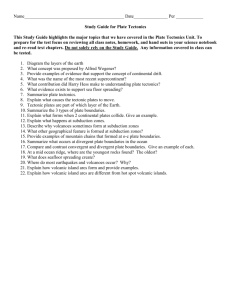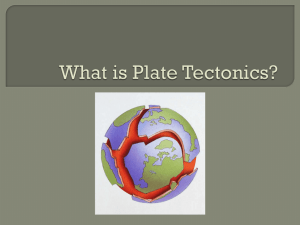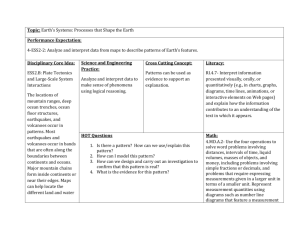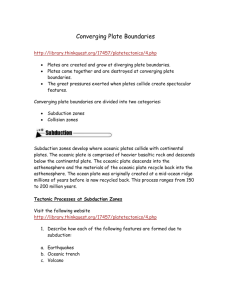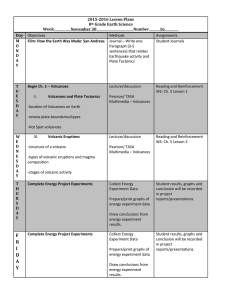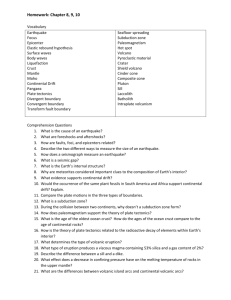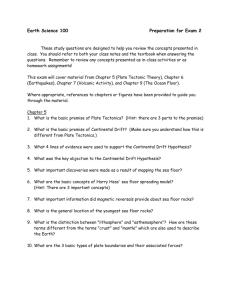Plate tectonics/volcanoes
advertisement
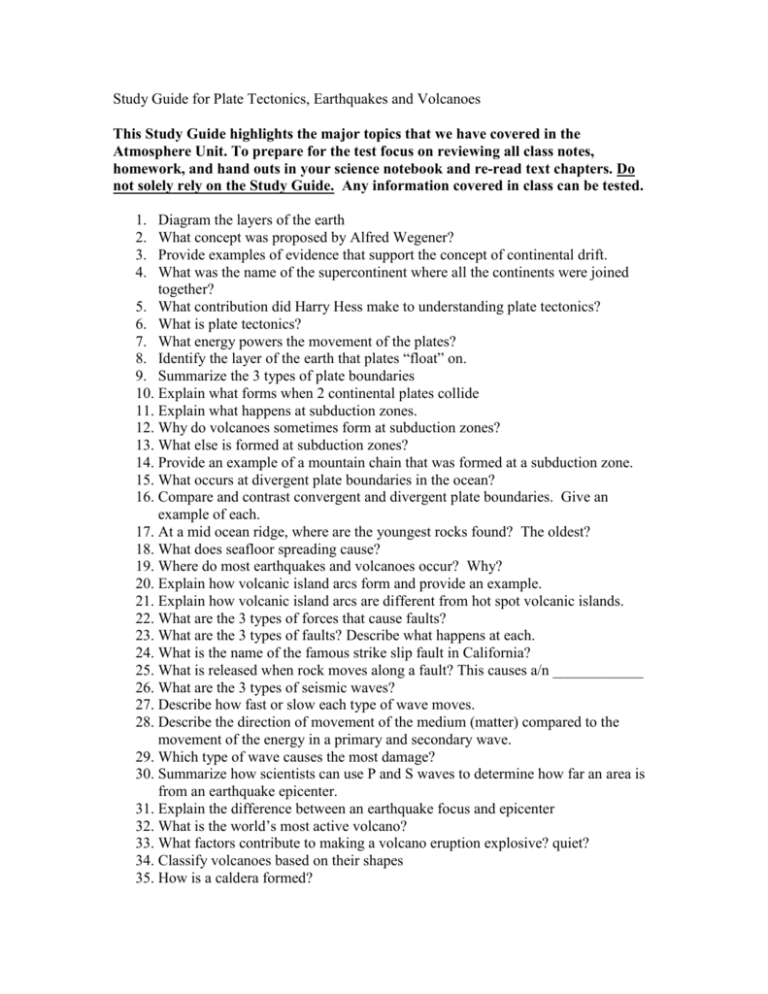
Study Guide for Plate Tectonics, Earthquakes and Volcanoes This Study Guide highlights the major topics that we have covered in the Atmosphere Unit. To prepare for the test focus on reviewing all class notes, homework, and hand outs in your science notebook and re-read text chapters. Do not solely rely on the Study Guide. Any information covered in class can be tested. 1. 2. 3. 4. Diagram the layers of the earth What concept was proposed by Alfred Wegener? Provide examples of evidence that support the concept of continental drift. What was the name of the supercontinent where all the continents were joined together? 5. What contribution did Harry Hess make to understanding plate tectonics? 6. What is plate tectonics? 7. What energy powers the movement of the plates? 8. Identify the layer of the earth that plates “float” on. 9. Summarize the 3 types of plate boundaries 10. Explain what forms when 2 continental plates collide 11. Explain what happens at subduction zones. 12. Why do volcanoes sometimes form at subduction zones? 13. What else is formed at subduction zones? 14. Provide an example of a mountain chain that was formed at a subduction zone. 15. What occurs at divergent plate boundaries in the ocean? 16. Compare and contrast convergent and divergent plate boundaries. Give an example of each. 17. At a mid ocean ridge, where are the youngest rocks found? The oldest? 18. What does seafloor spreading cause? 19. Where do most earthquakes and volcanoes occur? Why? 20. Explain how volcanic island arcs form and provide an example. 21. Explain how volcanic island arcs are different from hot spot volcanic islands. 22. What are the 3 types of forces that cause faults? 23. What are the 3 types of faults? Describe what happens at each. 24. What is the name of the famous strike slip fault in California? 25. What is released when rock moves along a fault? This causes a/n ____________ 26. What are the 3 types of seismic waves? 27. Describe how fast or slow each type of wave moves. 28. Describe the direction of movement of the medium (matter) compared to the movement of the energy in a primary and secondary wave. 29. Which type of wave causes the most damage? 30. Summarize how scientists can use P and S waves to determine how far an area is from an earthquake epicenter. 31. Explain the difference between an earthquake focus and epicenter 32. What is the world’s most active volcano? 33. What factors contribute to making a volcano eruption explosive? quiet? 34. Classify volcanoes based on their shapes 35. How is a caldera formed?

